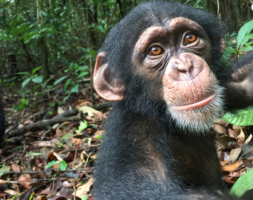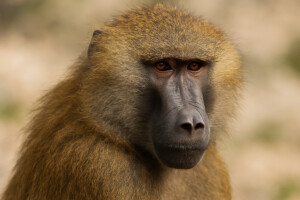“It’s wonderful to work with young living beings that are every day improving,” Preuschoft said. “They are so brave. They always want to make the most of what they have got.”
Orangutan forest school in Indonesia takes on its first eight students

A team of scientists and caretakers aim to give orphaned orangutan a chance to return to the wild.
BY JIM TAN // Mongabay Series: Great Apes
Bornean orangutans (Pongo pygmaeus) are classified as critically endangered on the IUCN Red List. A recent study published in Current Biology estimates that over 100,000 orangutans have been lost across Borneo between 1999 and 2015. The remaining orangutans exist in a number of geographically isolated groups known as “metapopulations,” and the study found that only 38 of the 64 Bornean metapopulations have more than 100 individuals — the threshold that scientists estimate is required for a viable population.
In Borneo, the orangutans’ natural forest habitat is disappearing at an alarming rate. Between 1973 and 2016, 30 percent of the island’s old-growth forest was converted to farmland for crops such as oil palm or lost as a result of forest fires — 195,000 square kilometers (75,300 square miles). “There is no land planning,” Preuschoft said, “only land grabbing.”
But the study also found large declines in orangutan numbers within the remaining forest, indicating that habitat loss is not the only threat. Hunting for bushmeat, the illegal pet trade and human-wildlife conflict over resources — plantation workers killing orangutans to protect their crops, for example — are all also important drivers of orangutan declines, according to the study’s lead author, Maria Voigt.
(To be continued…)
Read the full article in Mongabay.com

 Español
Español
 Português
Português








